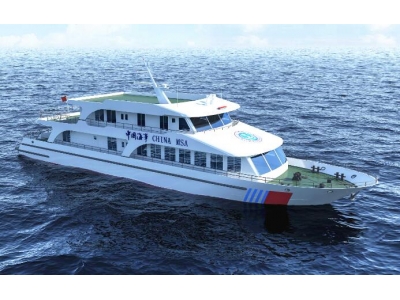Introduction
Unloading of ships is an integral part of the maritime industry. It involves the process of transferring cargo from a ship's hold to the designated storage area or transportation mode. This article provides a comprehensive guide on the procedures, techniques, and equipment utilized in the unloading of ships.
1. Types of Ship Unloading Methods
Ship unloading methods can be broadly classified into two categories: manual unloading and mechanical unloading. Manual unloading involves the use of laborers who carry out the unloading process by hand. On the other hand, mechanical unloading utilizes machinery to expedite the process and increase efficiency.
2. Mechanical Unloading Techniques
2.1. Crane Unloading: Cranes are commonly used in ship unloading operations. Different types of cranes, such as ship-mounted cranes, mobile harbor cranes, and gantry cranes, are employed depending on the specific requirements of the port and cargo.
2.2. Conveyor Systems: Conveyor systems are extensively used in ship unloading, especially for bulk cargo. These systems transport the cargo from the ship's hold to the storage area via a series of belts or chains.
2.3. Suction Dredging: Suction dredgers are sometimes used for unloading certain types of cargo, such as sand, gravel, or silt. They create a suction force to extract the cargo from the ship's hold and pump it ashore.
3. Safety Considerations
Unloading of ships involves inherent risks that need to be managed effectively. Safety precautions such as proper training, personal protective equipment (PPE), and adherence to safety protocols are crucial to minimize accidents and ensure the well-being of workers.
4. Environmental Impact
Ship unloading activities can have both positive and negative environmental impacts. It is essential to implement measures to mitigate pollution, such as containment systems for potential spills and using eco-friendly equipment and technologies whenever possible.
5. Challenges in Ship Unloading
Unloading ships can present various challenges, including adverse weather conditions, restricted access, and complex cargo handling requirements. Port operators and shipping companies must devise strategies to overcome these challenges and maintain efficiency.
Conclusion
The unloading of ships is a critical process in the maritime industry. Understanding the various methods, safety considerations, and environmental impacts associated with ship unloading is vital for port operators, shipping companies, and all stakeholders involved in the industry. By implementing efficient unloading techniques and prioritizing safety and environmental sustainability, the maritime industry can continue to thrive in a responsible and efficient manner.
Thank you for reading this comprehensive guide on ship unloading. We hope that it has provided you with valuable insights and knowledge about this vital aspect of the maritime industry.


